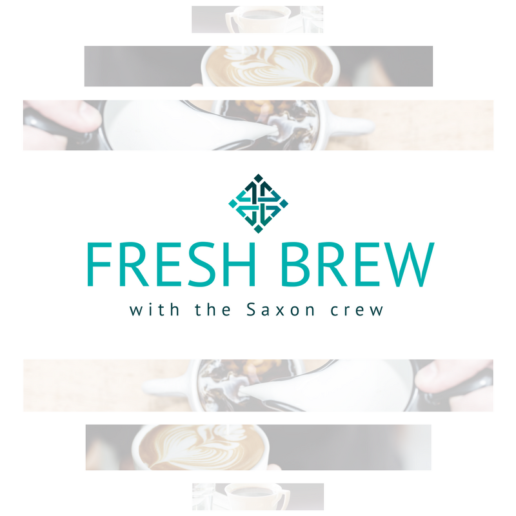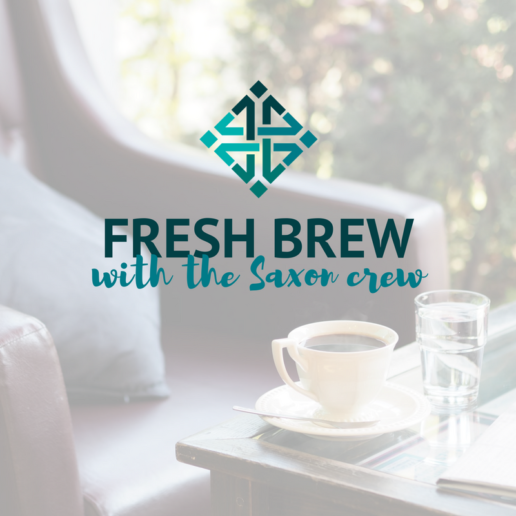Everything benefits managers need to know about Generation Z
Generation Z is making their way into today's workforce. Yes, they have similarities to millennials, but they have plenty of differences as well. Read this blog post to learn more.
Just when you thought you had finally figured out the millennial generation, there’s another young cohort of professionals entering the workforce. Sure, they’ve got some similarities to tech-focused millennials, but they have plenty of their own attitudes and opinions about money, relationships and, of course, work and benefits. Meet Generation Z.
Generation Z was raised in a post-9/11 world, following the dot-com boom and bust and during the midst of the Great Recession. There’s no doubt that these world events have colored the way they think and the way they work. Generation Z is a large cohort of about 72.8 million people and about 25% of the population. It’s a generation that employers will need to understand to create meaningful relationships. Here’s what you need to know.
They’re true digital natives. Generation Z was born between the 1995 and 2010, which makes them the first truly digital native generation. By the time they were heading off to Kindergarten, the internet had reached mainstream popularity and Mark Zuckerberg had already launched Facebook across college campuses.
Like many of us, Generation Z is rarely without their phones. But unlike your older colleagues, Generation Z may be more connected than ever — documenting their days on Instagram Stories and Snapchat, and messaging friends by text and other messaging platforms.
However, they’re also a relatively private bunch. Rather than broadcasting their lives on Facebook (like their parents, aunts, uncles and grandparents), they favor networks that allow for privacy. Snapchat snaps disappear, as do Instagram Stories. Gen Z also gravitates toward apps like Whisper, an anonymous social network for sharing secrets.
Here’s the takeaway for HR pros: Rather than seeing this as a barrier to communication, look at it as an opportunity. Try using text message reminders for open enrollment deadlines or creating a Slack channel for benefits communication, in addition to email and paper updates.
They’re seeking financial security. Generation Z grew up during the Great Recession, during which they may have seen their parents lose their jobs or deal with serious financial hardships. Because of this, Generation Z is focused on financial stability.
Unfortunately, many Gen Zers may join your company drowning in student loan debt from college. Consider offering benefits that help them get out of debt and begin saving for the future. Student loan debt repayment benefits with platforms like SoFi or Gradifi provide appealing avenues to pay off debt faster. You can also promote tax-deferred savings programs such as a 401(k) or health savings accounts to minimize their tax liability and maximize savings opportunities. These benefits may also appeal to millennials struggling with student loan debt and the prospect of saving for retirement — all while they start families.
Financial wellness benefits are attractive to all of your employees — Gen Z included. Consider partnering with local banks or credit unions to provide other savings options and financial education. Make this education appealing to everyone by providing it in different formats — in-person for anyone to attend, as well as on-demand webinars or Skype meetings for those who appreciate a more interactive experience.
Gen Z wants to actively participate. Generation Z is the most connected generation yet; they’re used to Googling an answer before you can finish your question or chatting with their friends throughout each day.
This hyper-connectedness lends itself to more interactive workplace meetings. Keep your Gen Z employees engaged and garner feedback by incorporating polls into your meetings, or creating recordings and presenting to computers and smartphones using a platform like Zeetings, Presentain or Mentimeter.
Whereas millennials were known for their interest in collaborating with each other, Gen Z wants to own their work a little bit more and compete against colleagues. Use this to your advantage to introduce gamification into your programs. Platforms such as Kahoot cannot only help you create some fun competition, but it can improve information retention.
They have a surprising communication preference. We’ve established that Generation Z is a hyper-connected cohort. But research uncovered one surprise about this generation’s preference for feedback: they prefer to be in-person. Use this knowledge to mentor your managers who will deliver feedback, and use it to make your benefits more appealing, too. For example, a confidential advocacy program with phone, email and chat options can be a great source for Gen Zers who want more information on their benefits.
While not everyone in this age group will conform to these attitudes and feelings, it can be helpful to pull back the curtain and understand how this generation could be different from millennials, Gen Xers and baby boomers.
How tech solutions can take aim at employee stress
Workers are stressed out. Stress can lead to a number of grave health conditions and unhealthy coping mechanisms. Read this blog post to learn how technology is helping battle employee stress.
In case you haven’t noticed, today’s workforce is completely stressed out. Overwhelming workloads, looming deadlines and the 24/7 always-on mentality is becoming the corporate America norm. Unfortunately, long-term stress can contribute to everything from heart disease to strokes, cancer and other grave conditions. Stressed employees also are more likely to be unmotivated, quit their jobs, perform poorly and have low morale and higher incidence of illness and accidents.
Because everyone copes with stress differently, some deal with it in unhealthy ways, such as overeating, eating unhealthy foods, smoking cigarettes or abusing drugs and alcohol, according to the American Psychological Association. This vicious cycle makes stress one of the top health concerns, with 49% of individuals at risk for stress-related illnesses, second only to weight, which impacts 69% of individuals, according to internal research.
All in all, employee stress is causing employers … well, stress. In fact, the cost of work-related stress in the US is $300 billion annually, according to the American Institute of Stress. Further, behavioral-related disability costs have increased more than 300% in the past decade and account for 30% of all disability claims.
While more than two-thirds of US corporations have adopted some kind of health and wellness program, the majority doesn’t adequately address or even include solutions that support mental health. That’s why it’s critical to educate employers on the real cost of stress and the benefits of an effective stress-related wellness initiative to help keep health costs down, while keeping employee productivity and retention up.
However the realities of promoting a healthy balance for employees, while simultaneously ensuring the delivery of quality work that’s completed on time, is much easier said than done. Anecdotally, we often hear that employees don’t feel they are benefiting from their corporate wellness plans because they don’t have time or they can’t break away from their desks.
Walk the walk
What can employers do to break the cycle? First and foremost, stress reduction starts from the top-down as management and bosses play a key role in employee adoption and lasting engagement. Not only are they responsible for communicating about available resources, they need to literally and figuratively walk the walk. When leadership incorporates stress management into their own lives, employees understand the company's commitment to these practices and feel more comfortable taking a break.
The role of technology
Some of the most effective wellness programs leverage a variety of technologies that offer something for everyone and makes it easier for employees to engage and benefit, regardless of where they are or the time of day. Popular technology-based solutions include:
· Digital health platforms — Connecting employees to health coaches, board-certified physicians, and colleagues who can provide support for those dealing with stress and offer guidance with chronic disease resulting from, or adding to, individuals’ stress levels.
· Digital health games — Employees receive encouragement and rewards through fun, engaging games in which they compete against others in stress-busting exercise to reach health goals.
· Wearables — Employees can sync popular wearable devices, such as their Apple Watch, to visualize the impact of guided meditations on their heart rate. Through smart feedback, employees can better understand which meditation exercises, locations, and times of day have the greatest impact on their heart rate, and therefore, stress level.
· Virtual Reality guided meditation — Combining an immersive VR with mindfulness meditation can help transport employees to relaxing environments, bringing a whole new dimension to the meditation experience. Using apps on their cell phones and portable VR headsets, employees are able to practice meditation from any place, at any time. In addition to stress reduction, a growing body of scientific evidence suggests that meditation can heighten attention spans, improve sleep, reduce chronic pain and fight addictions like drug and alcohol abuse, and binge eating.
The bottom line: Stressed-out employees can have significant health and financial consequences for your clients. With the start of open enrollment season just a few short months away, it’s time to start educating your customers about the benefits of incorporating mental health programs, like digital health platforms and meditation, into their corporate wellness plans to mitigate employee stress and improve productivity.
Miller, M. (11 July 2018) "How tech solutions can take aim at employee stress" (Web Blog Post) Retrieved from https://www.employeebenefitadviser.com/opinion/mental-fitness-why-your-corporate-wellness-portfolio-needs-mental-health-solutions
One sure-fire way to engage employees in voluntary benefits
Do you want to increase employee engagement when it comes to voluntary benefits? Read on to learn how to increase employee engagement.
Whether your employees are 22 or 62, they need to plan for the unexpected. A sudden injury or illness can dramatically derail their financial well-being and retirement readiness. As the responsibility for healthcare costs shifts to employees, employers are taking steps to help their employees by offering voluntary benefits, like critical illness and accident insurance.
The hitch, however, is that many employees aren’t taking advantage of these benefits.
There are many reasons for this: Employees may not have much appetite for voluntary insurance benefits after choosing medical benefits. They may not understand what’s being offered or how it is relevant to their lives. Further, if they haven’t been close to someone who has dealt with a catastrophic health issue, they may not grasp how destabilizing that is and how voluntary benefits can help at a difficult time.
So how do employers keep employees from hitting the snooze button on voluntary insurance benefits, and wake them up to how these benefits can help with their overall financial wellbeing?
One way is to understand what employees might need given their life stage, family situation or other variables. To help employees sort this out, here are few scenarios of how voluntary benefits could help employees — with fictional people based on a combination of our experiences with customers.
Leaving nothing to chance
Scott tends to be a worrier. His friends joke that he’s a 45-year-old man in a 25-year-old body. He is in the “adulting” stage of life — getting settled in a career, figuring out his personal life, and living on a salary that’s just a few steps up from entry-level. Scott worries about what might happen if he gets sick or injured and can’t meet his portion of his high-deductible plan. He’s also open about the fact that he doesn’t want to move back in with his parents. Unlike most of his friends, he’s also thinking decades ahead and is already contributing to a 401(k).
Scott wants it all — financial protection now and for the future. Based on what he’s seen happen to friends and colleagues close to his age, he chose critical care and accident insurance coverage during benefits enrollment at work. These options will help cover unexpected costs if an unexpected covered event does happen, and the cost won’t take a big chunk out of his paycheck thanks to his employer’s group rate. What’s more, the benefit is tax-free if he ever needs to use it, and can help keep him independent, and out of his parents’ house.
For employers, these kinds of benefits can help mitigate employees’ financial stressors so they can focus on wellness and getting back to work if an unexpected health issue strikes.
Weekend warriors and thrill-seeking hobbies
Catherine is a marketing manager who is married with two children. She is 44 and in the “balancing” stage of life, between “adulting” and “planning.” Her main concern when looking at voluntary insurance benefits was her husband, who likes high-thrill, risky sports. While Catherine tends to shy away from motorcycles and extreme sports, she is a bit of a weekend warrior since it’s hard to find time to exercise during the week. Her kids are also active and perpetually on the go, whether playing sports or just running around with the neighborhood kids.
Once Catherine learned about voluntary benefits, it was a no-brainer to choose accident insurance for her entire family. While she hopes that her family will only have fun — and avoid injury — doing what they all enjoy, she knows they have to be prepared for anything.
Employers can help employees choose the right benefits by encouraging them to think about how they and their families spend their leisure time, including sports, hobbies, adventure travel or any other activities.
Taking account of a family history of cancer
Meet Justin. He’s 55, married, and has a daughter. He is at the “planning” stage of life — following “adulting” and “balancing.” While Justin is healthy, his family history of cancer is a concern when he considers his future. He’s seen family, friends and colleagues struggle with the costs of a serious illness. He also is acutely aware of saving enough for retirement as he has only 10-15 more years in the workplace, during which he can save.
For Justin, his life stage, family history of cancer and concern for his family’s physical and financial well-being led to his purchasing decisions. To help mitigate financial setbacks if he should become ill, Justin purchased critical illness insurance. He also purchased critical illness and accident coverage for his wife and daughter.
From an employer point of view, emphasizing that employees should consider their family and individual medical history — and how an adverse event could impact them and their families — is a compelling way to make voluntary benefits relevant.
Making it real for employees
Many employers want to help their employees choose the right benefits for their specific needs to protect their financial well-being now and for the future. Showing how needs change with age and lifestyle sheds more light on how voluntary insurance can provide benefits for covered events that will help mitigate financial losses and reduce stress.
Digital technology is making it easier than ever to engage employees across channels with easily digestible but important information. Employers can set up “decision tools” that help employees make choices, offer videos that bring different situations to life, develop app-based calculators, and tell stories about how voluntary benefits can help them and their families during an unexpected illness or injury.
Employees have a lot on their minds. The key to making voluntary benefits real is to show employees why they matter and how to choose the right products. What many employees don’t know is that employers are working hard behind the scenes to offer benefits tailored to their workforce. This is an opportunity for employers to personalize the experience and demonstrate to employees that they truly care.
Grubka, R. (27 June 2018) "One sure-fire way to engage employees in voluntary benefits" (Web Blog Post). Retrieved from https://www.employeebenefitadviser.com/opinion/engaging-employees-in-voluntary-benefits?tag=00000151-16d0-def7-a1db-97f024870001
Fresh Brew with Abby Graham
Welcome to our brand new segment, Fresh Brew, where we will be exploring the delicious coffees, teas, and snacks of some of our employees! You can look forward to our Fresh Brew blog post on the first Friday of every month.
“It’s not that hard to be well!”
Abby has been in the insurance, health and wellness industry for over 12 years. Prior to joining Saxon, she spent the last 7 years working for Humana/HumanaVitality. She is passionate about making sure members understand their medical and wellness benefits as well as how to maximize their potential.
An active member and board member of the Cincinnati Modern Quilt Guild, Abby enjoys sewing and quilting in her spare time. She also enjoys spending time with her husband, Jon and her sons, Carter and Cameron.

Favorite Brew
Coffee
“Coffee! You really can’t go wrong with a solid cup of coffee.”
“Coffee Emporium in Hyde Park is the place to go.”
Favorite Snack
Reese’s Pieces Cookie
Reese’s Pieces Cookies are Abby’s favorite snack to enjoy with a cup of coffee.
Improve workplace fitness by focusing on the collective "we"
Do your employees participate in workplace wellness programs? Try involving the collective "we" to increase involvement. Continue reading to learn more.
Workplace wellness programs are implicitly focused on the individual: biometric screenings, individual incentives, gym member reimbursements. This approach can leave employees feeling less than motivated to take part because, even though the programs focus is on the individual, by no means does it make the program personalized.
As workplace wellness programs rapidly improve to meet the expectations of today’s workers, it’s important to remember the value of accountability and what a culture of health can do to create a workplace committed to wellness solutions.
Since wellness programs have traditionally focused on the individual, oftentimes employees never know if their colleagues are participating in any of the programs being offered. Bring it into the light by giving your employees a program they want to talk about, while still keeping it personalized. The collective “we” are not only more likely to try a wellness program, but we are also more likely to stick with it, if we know our peers are also partaking.
The power of sharing with your peers
We all know writing down a goal gives you a much higher chance of achieving it, but research from the Association for Talent Development says someone is 65 percent more likely to achieve a goal if the goal is shared with another person. Why? Because it creates accountability.
We are in the day and age of a social media frenzy, and, it’s cross-generational. We share everything we do and spend a lot of our time concerned with what our friends, family and co-workers are doing through these social platforms. Wellness practitioners can and should be taking advantage of this, especially as you build your culture of health.
To find the right wellness solution for your company or client, look for solutions that are social and easy to use. If the company as a whole has buy-in, or even a few internal advocates, word-of-mouth can be incredibly powerful. Whether that is around the water-cooler at work, on employees’ personal social media channels, or within the work intranet, create opportunities for employees to talk about your program and encourage them to use it. We know when an employee knows a few of their coworkers are planning to attend yoga or kickboxing on a Tuesday evening, they are much more likely to sign up and actually go.
These “wellness relationships” help not only build stronger bonds at work, but they also help you create and maintain healthy habits. You want your employees to engage with your wellness solution, so encourage them to share and become part of the “solution” themselves. At the end of the day, workplace wellness solutions are there to help everyone get healthier and stay that way, but they have to use the program.
More than just an incentive
We have spent at least a decade looking at incentives and how we align them to solve problems with low participation in our wellness program, when we should have focused on building a program that empowers our employees and puts them in the driver’s seat. I’m not suggesting you stop incentivizing your employees, but I do suggest you measure what it is you are rewarding. If it can’t be measured you may as well burn the money you are investing.
Remember, your employees are the real reason your program will sink or swim. Take care of your employees and encourage them to be and find their healthiest selves. Empower them in the process and give them choice in how, when and with who they participate in your wellness program and let them become your wellness solution.
Maurer E. (18 July 2018). "Improving workplace wellness by focusing on the collective 'we'" (Web Blog Post). Retrieved from https://www.benefitspro.com/2018/07/18/improve-workplace-wellness-by-focusing-on-the-coll/.
What’s the Deal With 529 Plans?
It’s never too early to invest. A 529 Savings Plan, prudent financial direction, and steady contributions are paramount to a successful college fund. Due to the intricacies of the financial instrument, an advisor is recommended to guide contributors throughout the process. In this installment of CenterStage, Cyrus Dhatigara – an investment advisor representative – has presented new contributors with his advice on 529 Savings Plans and how they can be beneficial for costly tuition fees.
How are they beneficial?

The 529 Savings Plan is a great way to save money for college. First, there are comparatively high limits on the amounts that parents or grandparents can contribute. Second, these plans are tax free: unlike with a tax-deferred 401(k), funds are exempt from taxation once they are eventually withdrawn. Third, mutual fund companies that are affiliated with state Tuition Trust Authorities are able to offer professional management leveraging a diverse array of funds. Fourth, 529 Savings Plans allow contributors to change the focus of their investments, typically starting with an aggressive strategy during a child’s younger years and moving towards a more conservative approach when he or she gets older.
How much to start?
Parents would naturally like to know how they can foster such an investment. Most have the basic idea of what a 529 Savings Plan is, but not much more. Seeking sound financial advice should fill any gaps in proficiency. Also, there’s no excuse to wait – it takes a mere $25 per month to initiate a plan. Further, 529s can make use of automated checking account withdrawals to enable healthy growth. This is a flexible product, though annual contributions will likely need to increase on that basis. The maximum limit per child is around $300,000; parents can contribute whatever they want and supplement the fund via one-off investments from grandparents.
What do they cover?
Anything that’s necessary for class is covered: books, tuition, fees, and computers or iPads, among other things. In fact, a 529 Savings Plan even covers grad school. Since the investments are earmarked for higher education, money is transferred directly from the mutual fund to the university without any contributor intervention. As a result, parents shouldn’t be concerned about quarterly or semester requirements, and there isn’t room for IRS violations since their only further interaction is taking a receipt.
How can Saxon help?
Cyrus crafts strategic savings plans around children to help fund college tuition, while providing the tools for protection and investment. His largest passion project is an extension of the daily work he does. He revels in contributing financial education to all ages. Saxon’s goal is simple, to mold this program to fit contributors’ individual needs, right from the beginning. We know college savings plans are not one-size-fits-all. Whether you are looking to save for tuition, room and board fees, books, supplies or required computer equipment and technology, Saxon can help.
Please contact Cyrus Dhatigara with any questions you may have on 529 Savings Plans. You can reach him at 513.236.9334 or send him an email at cdhatigara@gosaxon.com.
Download the PDF.
What do the DOL’s new AHP rules actually mean?
On June 18, 2018, the Department of Labor released a set of final regulations regarding Association Health Plans. In this article, Beinecke explains what they mean.
President Trump signed an Executive Order on October 12, 2017 directing the U.S. Department of Labor to consider ways to make it easier to form an Association Health Plan by expanding existing membership rules. After issuing proposed regulations in early 2018 and considering public comments, the DOL issued a set of final regulations intended to make it easier to form AHPs on June 18, 2018.
The final regulations do not replace the existing AHP rules. Instead, they create a three-tier AHP system referred to in this article as the:
Narrow Standard AHP: These AHPs are available under the existing rules, but they can be difficult to form.
Relaxed Standard AHP: These AHPs are created by the new regulations. They are easier to form than a Narrow Standard AHP and can allow self-employed individuals to participate, but they do not allow as much flexibility in terms of plan design and underwriting (discussed in the chart below under “Plan Design and Underwriting”).
Non-Conforming AHPs: These are AHPs that do not meet either the Narrow or Relaxed Standards. We’ll touch on these briefly at the end of this article.
What are the Pros and Cons for Narrow and Relaxed Standard AHPs?
Pros:
- The combined membership of the member employers may enable the AHP to self-insure
- Qualify as single employer group health plans for ERISA and other purposes, enabling many fully-insured AHPs to qualify as a large group insured plan based upon the number of covered lives
- Self-insured and large group insured AHPs are able to avoid certain requirements applicable to small group and individual plans under federal and state law, including:
o The requirement to offer all essential health benefits (EHB) mandated by a state’s EHB package (the AHP will still have establish a reasonable definition for EHBs such as selecting a benchmark plan); and
o Community rating requirements. This may enable AHPs to offer less expensive coverage alternatives to member employers as well as greater flexibility when setting premiums (but see “Plan Design and Underwriting” in the chart below)
- Greater buying power than individual member employers may have on their own
- The AHP’s risk pool may be more favorable for smaller employers than the community rating in their applicable small group market(s)
Cons
- Not appropriate for many potential member employers and should be carefully evaluated on a case-by-case basis
- Do not avoid state regulation, even if self-insured
- Require a strong ongoing commitment to participate from member employers as turnover can cause AHPs to quickly fail
- Insurance carriers may be reluctant to insure AHPs that do not meet certain criteria established by the carrier (e.g. The insurance carrier may require a closer relationship between the member employers than the AHP rules require)
AHP odds and ends
AHPs are generally subject to the reporting and disclosure requirements applicable to the underlying benefits, which may include providing summary plan descriptions, summaries of benefits and coverage, and Form 5500 filings. The DOL is still working out how certain other requirements may apply to AHPs. For example, the DOL indicated that existing HIPAA wellness rules apply to AHPs and the Mental Health Parity and Addiction Equity Act will apply if the member employers of the association have at least 50 employees in the aggregate, but the DOL is still considering how COBRA may apply and intends to issue additional guidance addressing this.
Many AHPs will not qualify as Narrow Standard or Relaxed Standard AHPs, typically because the association fails to meet the formation requirements described above. These Non-Conforming AHPs can still provide the advantages of greater purchasing power and the ability to separately experience-rate member employers like Narrow Standard AHPs, but Non-Conforming AHPs do not qualify for single employer plan treatment and are instead viewed as a separate plan maintained by each member employer. As a result, many member employers will still be subject to the small group and individual plan requirements that Narrow Standard and Relaxed Standard AHPs can avoid.
Effective dates
There are three phase-in effective dates under the final regulations:
- Sept. 1, 2018: New or existing associations may establish a fully-insured Relaxed Standard AHP
- Jan. 1, 2019: AHPs in existence on or before June 18, 2018 may establish a self-insured Relaxed Standard AHP.
- April 1, 2019: All other new or existing associations may establish a self-insured Relaxed Standard AHP.
There are no effective dates specific to Narrow Standard or Non-Conforming AHPs as these existed before the final regulations and are not directly affected by them.
Source:
Beinecke, C. (19 July 2018). "What do the DOL’s new AHP rules actually mean?" (Web Blog Post). Retrieved from https://www.employeebenefitadviser.com/opinion/what-dol-ahp-rules-actually-mean
3 ways to support employee caregivers
Caregiving can impact the well-being of employees. Because of this, many employers have started offering benefits to employees who provide care to loved ones.
Think about the people you work with every day—their similarities and differences, their hobbies and family backgrounds, their areas of expertise. Despite their myriad differences, employees of all backgrounds face common challenges that preoccupy their thoughts and pull them away from their work.
A newly released white paper, “Taking Care of Caregivers: Why corporate America should support employees who give their hearts and souls to those in need,” highlights caregiving as an emerging factor that greatly impacts the well-being of today’s workforce.
The scope of what it means to be a caregiver is broad, and many employers remain unaware of how caregiving affects the well-being of their employees. “For many, caregiving is comparable to holding down a second job, and the lines between their work and personal lives become blurry, at best, when the care of a loved one is top-of-mind,” the white paper states. “Tethered by an emotional struggle to leave unpaid caregiving at home, these people must go to work and are expected to perform at the highest level.”
Transamerican Institute’s pivotal study, The Many Faces of Caregiving, reported that 14 percent of employee caregivers go so far as to reduce their work hours or receive a demotion. Another 5 percent give up working entirely.
While caregiving proves costly for employee well-being, studies also reveal how costly it is for business. According to AARP and the Family Caregiver Alliance, employee caregiving costs employers:
- Up to $33 billion annually from lost productivity
- $6.6 billion to replace employees who retire early or quit
- $5.1 billion in absenteeism
It doesn’t take a “Big Four” accounting firm to see that ignoring this challenge is bad for business. The National Business Group on Health reports 88 percent of employers have “expectations that caregiving will become an increasingly important issue in the next five years.”
But what can be done to make life easier for employee caregivers and keep them happy, healthy and focused at work? Companies of all sizes are taking notice of this challenge and embarking on the first steps to support employee caregivers.
Taking Care of Caregivers highlights a few policies industry leaders have implemented thus far to support employee caregivers.
1. Offer paid leave for caregivers
Giving employee caregivers time and space to be with their loved one and figure out what’s next is a great starting point.
Companies like Microsoft, Starbucks, Bristol-Myers Squibb and Facebook all offer paid time off for employees to care for sick family members. Facebook even offers 10 to 20 days of bereavement leave, which provides much-needed time for caregivers to focus on self-care after experiencing the loss of a loved one.
Renee Albert, Facebook’s Director of benefits, goes so far as to say, “Caregiver support is part of our DNA,” as Facebook aspires to be “the best company for families, no matter how you define ‘family.’”
2. Get creative with online resources
While paid leave certainly frees up time for employee caregivers to focus on their loved one’s care, simply providing PTO doesn’t guarantee that the employee will figure out how to best care for their loved one while they’re away from work. Most first-time caregivers spend hours searching the internet for what to do next with little luck or clarity.
Taking Care of Caregivers cites online support groups, decision-support systems and digital support platforms as primary ways to support employee caregivers in today’s digital world. These tools can be particularly helpful for emotional support and guidance.
“Use opportunities to create communities,” Albert suggests. “Often just knowing you aren’t alone and have someone to share your experience with goes a long way.”
3. Consider how your workplace culture can benefit caregivers
Caregiving programs come in all shapes and sizes, and companies of all sizes can leverage their resources to develop solutions that are responsive to the needs of employee caregivers. This includes options like telecommuting and flexible schedules, which are becoming increasingly common as traditional workplace culture continues to change.
A study conducted by AARP and the ReACT coalition confirms the importance of these programs, stating that “flextime and telecommuting programs saw an ROI of between $1.70 and $4.45 for every dollar invested. What’s more, a work-family human resources policy is associated with a share price increase of .32 percent on the day that policy is announced.”
Even incorporating stress-reduction activities into the workplace can go a long way for caregivers. On-site yoga and exercise classes, relaxation techniques, and massage therapy are just a few options that can help caregivers focus on self-care.
As America’s workforce continues to face the challenges of caregiving, it is time for employers to creatively consider ways to offer support to this preoccupied and stressed-out employee group. Caregiving will eventually touch us all. Take part in these initiatives now, and your employees will thank you later.
SOURCE:
Payne, E. (19 July 2018) "3 ways to support employee caregivers" [Web Blog Post]. Retrieved from https://www.benefitspro.com/2018/07/19/3-ways-to-support-employee-caregivers/
Point-of-sale wellness: How health plans are cashing in
Many health plans are starting to offer preventative approaches to help promote health and reduce skyrocketing healthcare costs. In this article, Vielehr talks about one approach, the point-of-sale wellness method.
Health care costs continue to skyrocket, and payers are constantly looking for ways to keep their populations healthier and to reduce these costs. Payers looking for more effective strategies to improve health and wellness for members should be aware of the new preventative approaches that more health plans are offering.
One such method that health plans are deploying to engage members is point-of-sale wellness, a type of incentive program that encourages members to actively make healthier purchases and lifestyle choices. As point-of-sale wellness becomes more prevalent among health plans, human resource managers and benefits brokers should understand how these programs work to best determine if they would be a valuable option for their employees and clients.
What is point-of-sale wellness?
Point-of-sale wellness is all about helping health plan members make smart, healthy purchasing decisions when they’re in a retail store or pharmacy. According to the Henry J. Kaiser Family Foundation, the average consumer visits their doctor 3.1 times per year. This same consumer will visit his or her favorite retailers multiple times per week. This presents the perfect opportunity for actionable engagement. It is often too easy for individuals to make impulsive decisions that favor cheaper care items or junk food that provides instant gratification but lead to an unhealthy lifestyle in the long run. Empowering consumers in these moments before checking out at the register with the understanding — and more importantly, the financial incentive — to make informed, smarter choices can lead to a healthier lifestyle and reduced health care costs. In short, the goal is to help individuals prioritize health and wellness at retail point of sale.
There are numerous ways that health plans can achieve this goal. One of the most common is by providing members with prepaid cards that are loaded with funds and discounts for the purchase of over-the-counter (OTC) items such as vitamins, diabetes care items and medications for allergies or cold and flu symptoms. The key component of these specialized prepaid cards is that they can be restricted-spend cards. In other words, they cannot be used to purchase any items that the health plan members want; they can only be used to purchase items off a curated list of products.
Under this arrangement, all parties, from the individual to the health plans and retailers, benefit. With a restricted-spend prepaid card in hand, an individual is rewarded for making purchases that contribute to a healthier lifestyle, while reducing health care costs both for themselves and the health plans administering the cards. In the meantime, the retailers partnering with the health plans to make point-of-sale wellness possible enjoy the opportunity to build long-term customer relationships with the health plan members using the cards.
Point-of-sale wellness in action
Point-of-sale wellness can be customized to be as general or specific as a health plan needs. For example, a health plan that supports a high number of new parents on a regular basis may offer a prepaid card designed specifically to assist members with newborn children. The first years of an infant’s life are among the most expensive from a health care perspective. More health plans are starting to offer new parents prepaid cards that are loaded with funds and discounts for items such as OTC medications, baby food and formula, diapers, strollers, car seats or thermometers. This opens an easier path for new parents to do basic at-home diagnostics and keep their babies’ health monitored so costly trips to an emergency room or urgent care center are not needed as often.
Payers that offer health and wellness programs to assist new parents in their populations can consider engaging health plans that offer these types of prepaid cards. Having a healthier child has the added benefit of reducing stress on the parents, which means they are in a better position to continue performing in the workplace.
Financial incentives for healthier choices
Most wellness programs are focused on informing participants of the best ways to support a healthier lifestyle, but that is only half of the equation. Point-of-sale wellness goes one step further to ensure participants are empowered from a financial perspective to make smarter purchasing decisions while shopping for daily care items. Businesses and benefits brokers who want to provide their employees and clients the best opportunities to live a healthier lifestyle should consider engaging health plans that prioritize these prepaid card incentives into their offerings.
Vielehr, D. (19 July 2018). "Point-of-sale wellness: How health plans are cashing in" (Web Blog Post). Retrieved from https://www.benefitspro.com/2018/07/19/point-of-sale-wellness-how-health-plans-are-cashin/
Consequences and/or Remedies for Late or Missing Form 5500s
The Form 5500 deadline is approaching quickly. Below, Employee Benefits Corporation discusses the three different options employers have if they fail to file their Form 5500 or if they file late.
The Form 5500 is due on the last day following seven months after the end of the plan year. In order to be granted an extension, the employer would have to send the IRS a Form 5558 for each plan subject to Form 5500 obligations. The Form 5558 needs to be postmarked by the original due date or it will be rejected.
Failure to file or failure to file required Form 5500s on time can prove to be costly for an employer as daily penalties are assessed for late or missing filings.
What should an employer do if they find out they never filed a Form 5500 or they failed to file the Form 5500 by the deadline?
The employer should consider their risk tolerance, the number of plans they have not filed and the potential penalties to determine what the best course of action is for them.
They have three options:
- Do not file and hope that no one questions them if they are audited. There is a potential consequence of $300/day for each plan (per plan/ per plan year) that did not get filed or get filed on time. Penalties capped at $30,000 per year.
- File late and hope that no one notices. There is a potential consequence of $50/day for each plan (per plan/per plan year) that filed late or not on time. No cap on the penalty in this case.
- File late under the Delinquent Filers Voluntary Compliance Program (DFVCP). There is late fee of $10/day for each plan (per plan per plan year) that is filing late. Penalties capped at $2,000 per large plan/$750 per small plan if filing multiple plan years for a plan. Penalties for large plans that file more than 1 delinquent plan year per plan number filing at the same time, the maximum penalty is $4,000 per plan and $1,500 for small plans.
The Bottom Line:
Employee Benefits Corporation can assist employers with the preparation of their delinquent Form 5500s as part of our Compliance Services offerings. Employers will pay the DFVCP penalties directly to the DOL online as part of the process. We can help educate the employer on the risk factors associated with each approach and to assist, if contracted to do so, in the preparation of the Form 5500s.
SOURCE:
Employee Benefits Corporation (29 June 2018) "Consequences and/or Remedies for Late or Missing Form 5500s" [Web Blog Post]. Retrieved from https://www.ebcflex.com/Education/ComplianceBuzz/tabid/1140/ArticleID/613/Consequences-and-or-Remedies-for-Late-or-Missing-Form-5500s.aspx?utm_source=7.19.18+Need+to+Know+%7C+Missing+Form+5500s&utm_campaign=7-19-18_Need+to+Know+email-Form+5500+season&utm_medium=email













